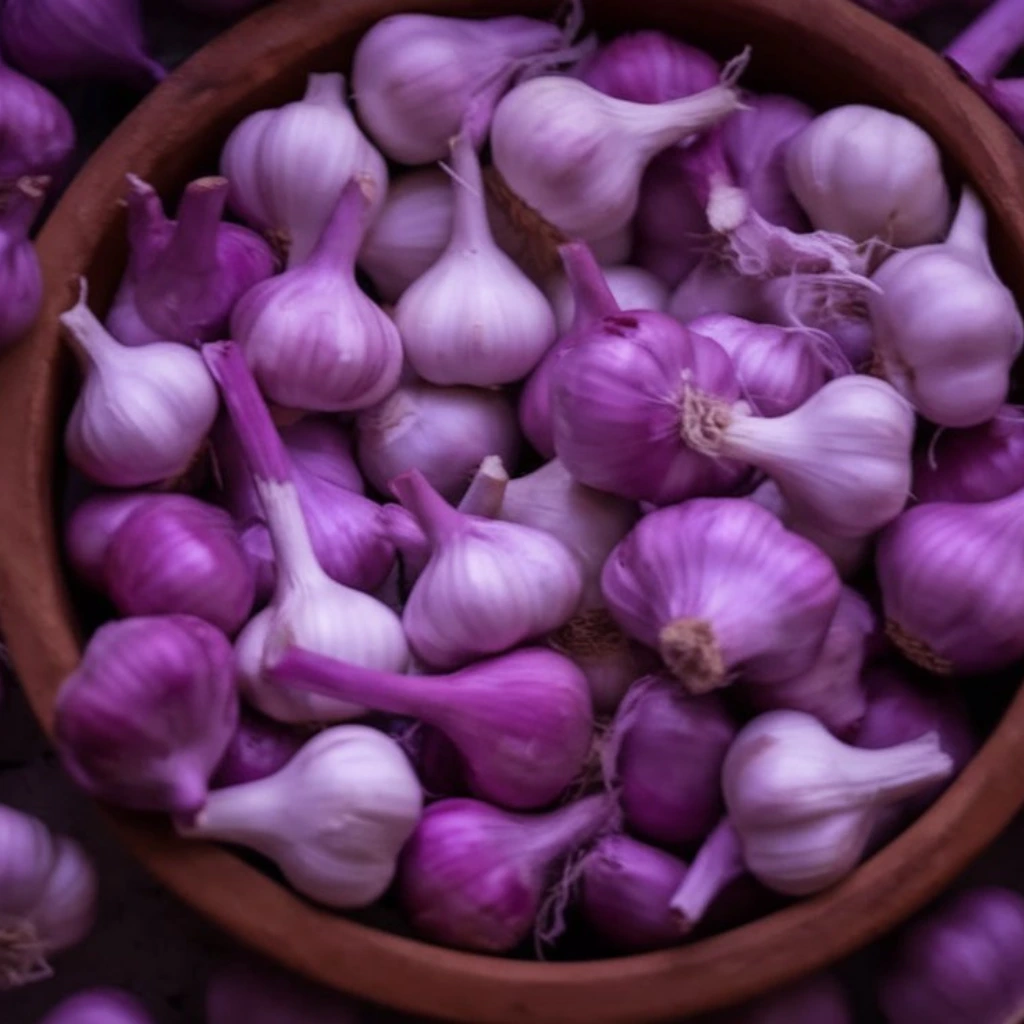Garlic’s journey began centuries ago in Central Asia, where it enhanced dishes and supported health. Most people know the common white garlic at grocery stores. Purple garlic stands out with its purple-tinted skins and brings a milder flavor to dishes.
These two varieties differ beyond their looks. White garlic comes from the softneck family. Purple garlic belongs to the hardneck variety and has a woody central stalk. Purple garlic’s cloves pack more juice and size than white garlic. They create a lasting flavor that makes both raw and cooked dishes taste better.
Let’s look at how purple and white garlic stack up against each other. Their physical traits and storage life tell different stories. White garlic stays fresh for 8-12 months, while purple garlic keeps for 4-6 months. Understanding these differences helps you pick the right garlic type that matches your cooking style.
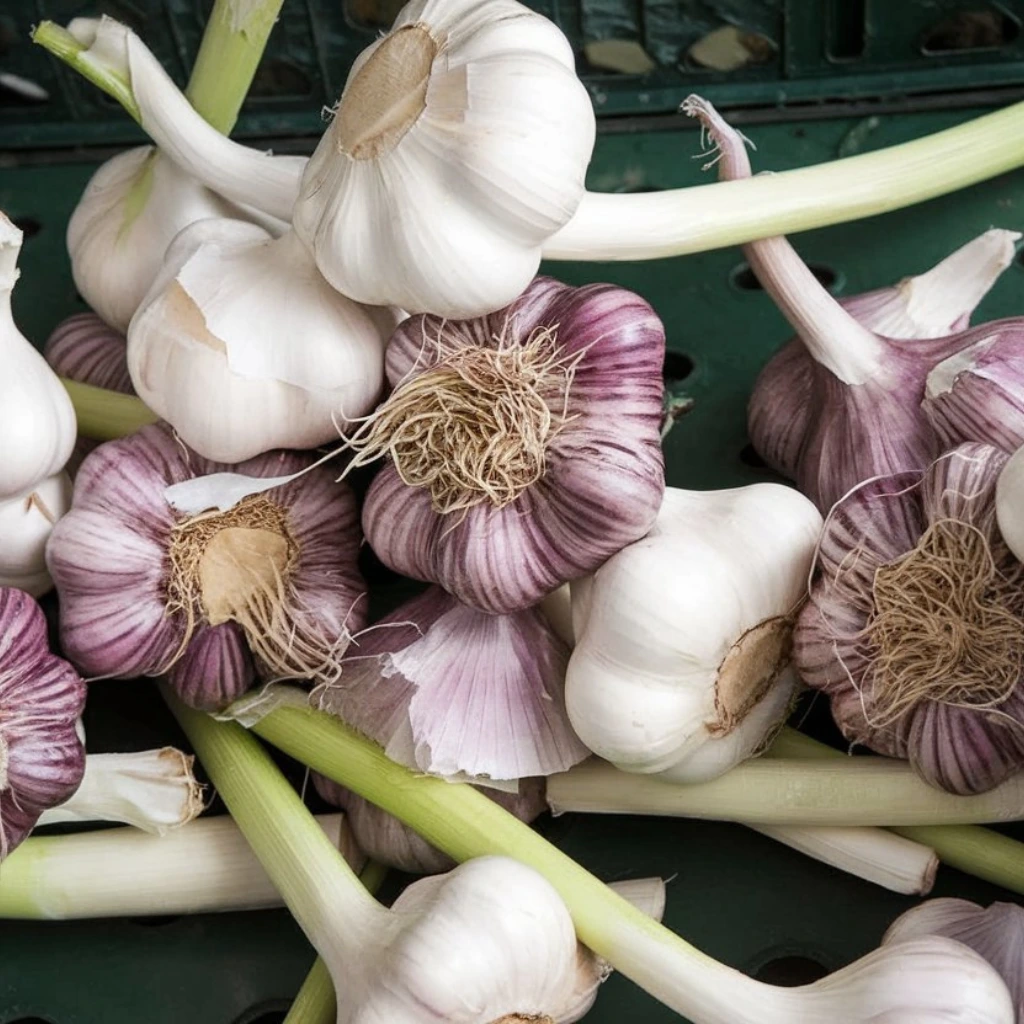
The Visual Differences Between Purple and White Garlic
The most noticeable difference between purple and white garlic is in their outer papery coverings. Purple garlic has beautiful purple stripes or streaks along its papery sheath that make it stand out in the produce aisle. White garlic comes with clean, papery white skin without any colorful markings.
Physical appearance and how to identify each type
These color differences tell you exactly what variety you’re looking at. Purple garlic comes from the hardneck family, particularly varieties like Italian Purple Garlic. You’ll see these purple streaks only on the outer skin, usually as splotches or stripes. The cloves inside stay white or ivory, just like regular garlic.
Most people know white garlic as “regular garlic” in grocery stores, and it belongs to the “softneck” family. White garlic bulbs have papery white ski,n and you can find them throughout the year. Some white garlic might show tiny violet or brown stripes, but they’re nowhere near as bold as their purple cousins.
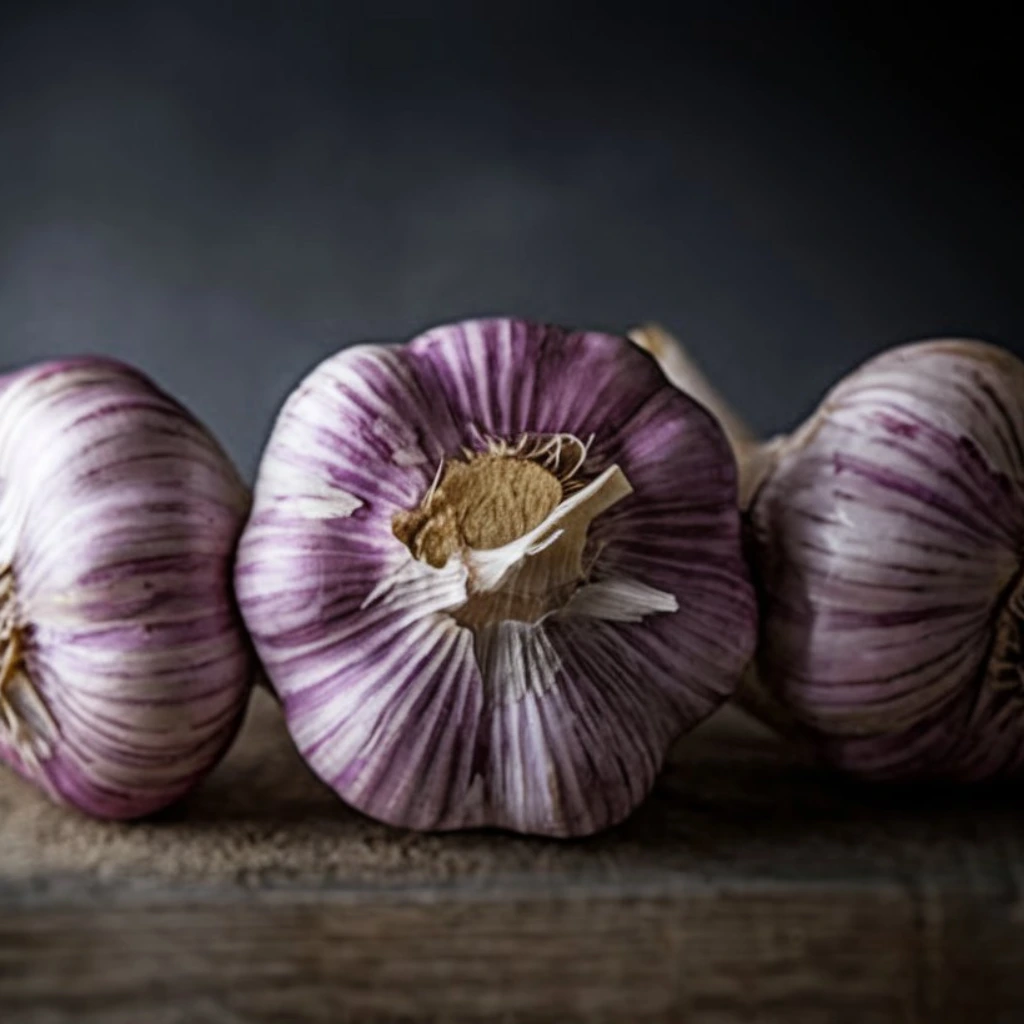
Hardneck vs. softneck structure
The structure sets these varieties apart. Purple garlic grows with a tough, woody central stalk through the middle of the bulb. Gardeners call this rigid central stem a “scape”. This hard central stalk gives these varieties their name and unique look.
White softneck garlic grows differently – it doesn’t have that firm central stem. The soft, flexible neck makes these varieties perfect to braid. Commercial growers love this feature because they can easily braid and hang these garlics for display and storage.
Size and arrangement of cloves
Clove arrangement makes another clear difference. Purple hardneck garlic forms cloves in a single, neat row around the central flowering stem. These bulbs have fewer but larger cloves—usually between 4-12 per bulb—and they sit in a tidy circular pattern.
White softneck garlic packs in more but smaller cloves, with over 12 cloves in each bulb. The cloves stack in multiple layers (usually 2-3), with bigger ones on the outside and smaller ones tucked in the center. One bulb might give you anywhere from 10 to 30 cloves of different sizes.
On top of that, it’s easier to peel purple garlic cloves compared to white ones, which makes them a favorite among chefs who care about both convenience and flavor.
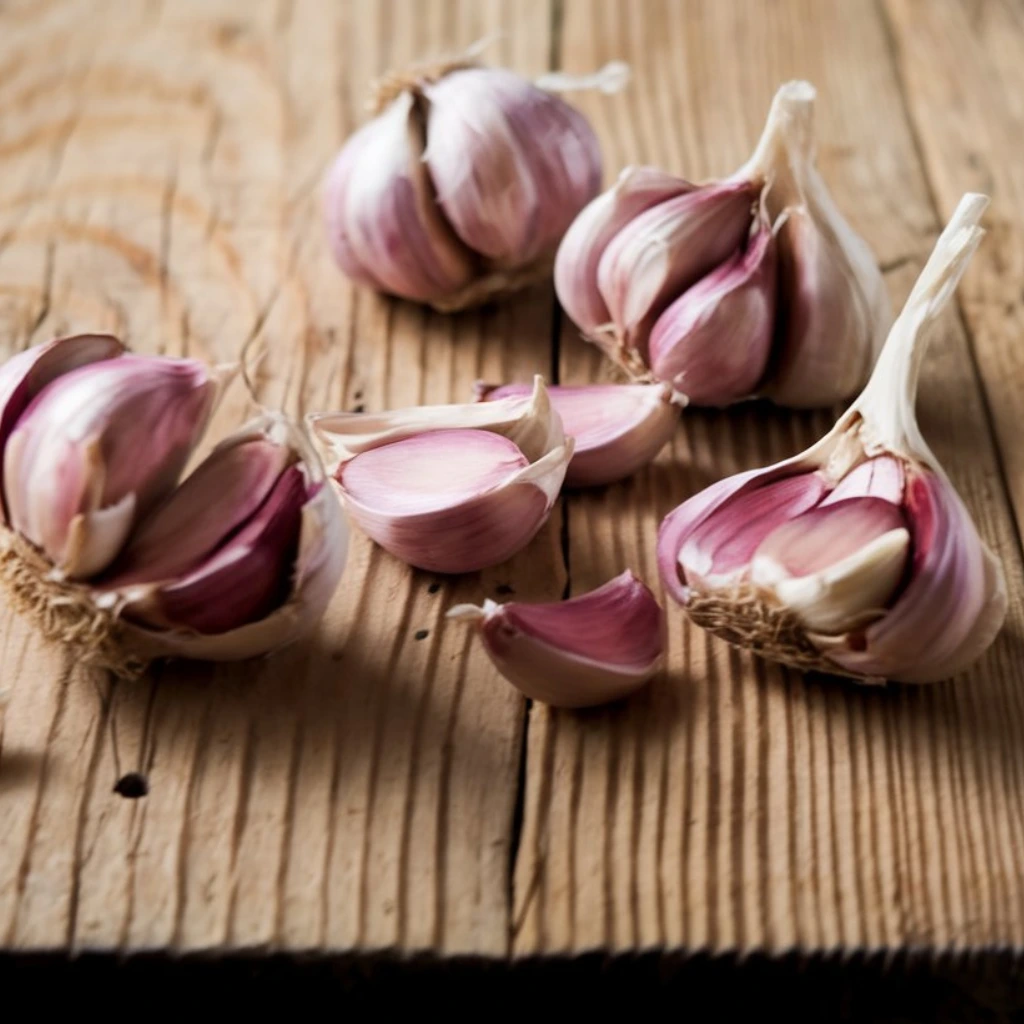
Flavor Profiles: How Purple and White Garlic Taste Different
Purple and white garlic look different, but their unique flavors can really affect your cooking. Each variety develops its own taste profile from sulfur compounds that form differently. This creates distinct flavors you should know about.
Raw flavor comparison
Raw white garlic packs a strong punch with noticeable heat. The base flavor comes across as more neutral than other types. Many people call it sweet and a bit nutty beneath that signature bite. White garlic’s sharp taste stays on your tongue longer and might leave a bitter or metallic finish.
Raw purple garlic tastes sweeter and milder than most people expect. You’ll find more layers to its flavor, with gentle heat and a peppery kick that doesn’t take over. Purple garlic works great in uncooked dishes. Your salad dressings, salsas, and dips will benefit from its balanced, rich flavors without overpowering other ingredients.
How cooking changes each variety
Heat changes both types in amazing ways. White garlic gets much mellower as it cooks and turns sweeter. The sharp edge fades away. The flavors blend smoothly into your dishes the longer you cook it. This makes white garlic perfect for slow-cooked recipes and broths.
Purple garlic changes even more dramatically with heat. The mild taste becomes noticeably sweeter with a rich, buttery quality. Chefs love how purple garlic keeps its true garlic character better through cooking. The distinctive flavor stays strong even after long cooking times.
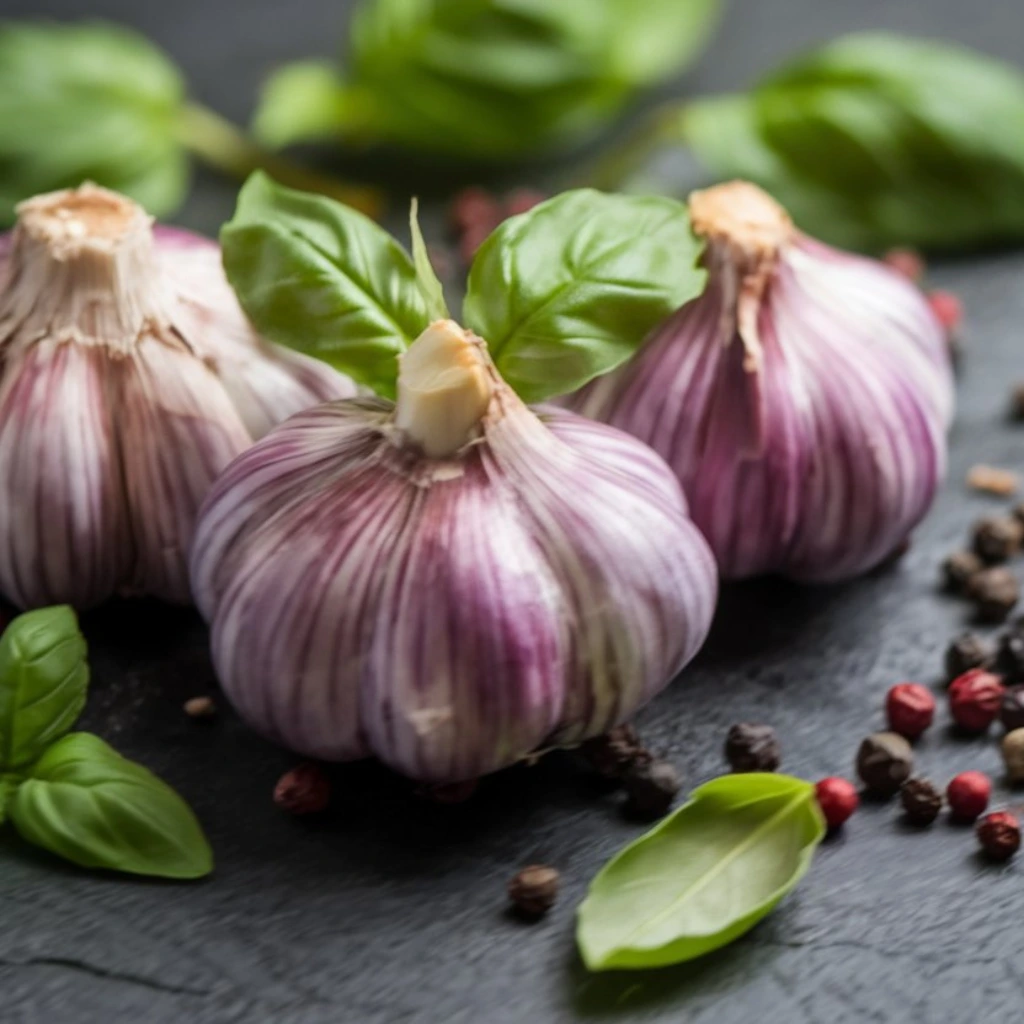
When milder purple garlic works best
Purple garlic shines in recipes where garlic should enhance rather than dominate. To name just one example, see how well it works when roasted whole in the oven or on the grill. The natural sweetness becomes more intense. Italian Purple stands out because it works well both raw and cooked. You get mild sweetness with a hint of spice that mellows with heat.
Purple garlic varieties make Mediterranean and Middle Eastern dishes taste amazing. They add the right touch to homemade aioli, compound butters, and light pasta dishes. These recipes let you appreciate the subtle flavors. Purple varieties give you the perfect solution when you want garlic to boost a dish without taking over.
Storage and Shelf Life: Making the Right Choice
Storage life makes a huge difference between purple and white garlic varieties. Learning these differences helps you keep your garlic fresh and flavorful all year round.
Why white garlic lasts longer
White garlic’s extended shelf life comes from its physical structure. White softneck garlic stays fresh for 8-10 months in the right conditions, which is almost double the time of purple hardneck varieties that last 4-6 months. The protective qualities of white garlic’s exterior make this possible.
White garlic has thicker skin that better shields it from the environment. A farmer puts it well: “It resists the external environment and fights like a pro”. This tough outer layer stops moisture loss and air exposure that can make garlic go bad faster.
The softneck structure adds to its longer life. White garlic stays intact better over time because it doesn’t have the stiff central stem you’ll find in purple hardneck varieties.
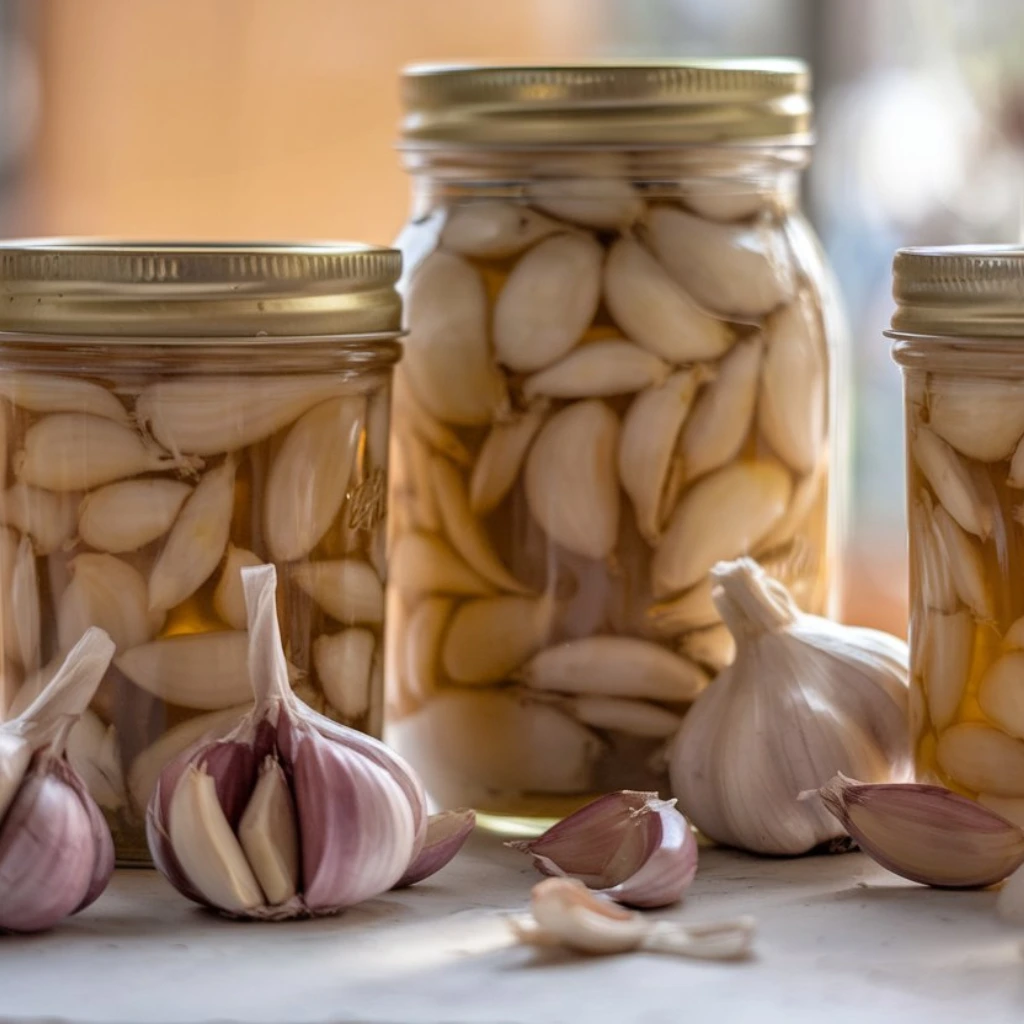
Best storage methods for each type
Both types need proper storage, but each has its own needs.
Purple garlic needs special care:
- Room temperature storage in mesh bags or loose-weave baskets works best in humid summers to let air flow
- A small clay flower pot in a closed cabinet can help during dry winter months with indoor heating
White garlic handles different environments better. The sweet spot is 60-65°F with 60-70% humidity. Never use plastic bags for either type – they trap moisture and speed up spoilage.
Dark, dry spaces with good airflow work best year-round. While the fridge isn’t great since it makes garlic sprout, peeled cloves stay fresh up to two weeks in airtight containers.
Signs of freshness to look for when buying
The “squeeze test” tells you a lot about any garlic you’re buying. Fresh bulbs should feel solid without giving way under gentle pressure. You want tight, intact papery skin around the cloves without too much flaking or color changes.
Stay away from light-feeling bulbs or ones with dark spots and mold. Green shoots coming from cloves mean the garlic is old and will taste more bitter.
Purple garlic buyers should look for bright purple stripes and firm, full cloves. Since it doesn’t last as long, these freshness signs matter even more to get the most use at home.
Cooking Applications: Which Garlic Works Best When
The right garlic variety can raise your cooking from good to exceptional. Purple and white garlic each have unique properties that make them better suited for specific dishes.
Dishes that showcase purple garlic’s qualities
Purple garlic stands out in dishes where its subtle flavor becomes the star. Its mild nature makes it perfect for raw applications without overpowering other ingredients. You can mince it into salad dressings, salsas, and fresh dips to add a gentle garlic presence.
This variety tastes amazing when roasted and develops a sweet, complex flavor with hints of caramel. Yes, it is true that purple varieties like Chesnok Red are famous for their roasting qualities. You can stuff whole purple garlic bulbs into a chicken cavity before roasting to infuse incredible flavors.
Italian Purple garlic stands out for its versatility. It brings mildly sweet, full-bodied flavors with a slight spicy kick in uncooked dishes. The sweetness increases and mellows considerably when cooked.
When white garlic is the better option
White garlic packs a stronger, more assertive profile that holds up well against bold ingredients. The stronger taste works great in longer cooking processes like stews, soups, and stir-fries. It mellows nicely without losing its presence.
White garlic’s higher clove count makes it practical for recipes that need lots of garlic. The thinner skins and sticky texture might be harder to peel, but they help create smoother sauces and pastes.
White softneck varieties shine in dishes with competing bold flavors that might mask purple garlic’s delicate notes. Chefs often prefer them for hearty braises, robust marinades, and garlic-infused oils where you need both quantity and quality.
Substitution tips and adjustments
Here are some helpful guidelines for substituting between varieties:
- Purple and white garlics work interchangeably in most recipes, but you might need to adjust quantities
- Add a bit more purple garlic when replacing white in raw dishes to match the intensity
- Cut the amount by 25% when using white instead of purple in roasted dishes to avoid overwhelming flavors
- Asian cooking works best with varieties like Asian Tempest, which adds sweet bell pepper notes, or Tzan for a round flavor without sharp garlic heat.
Both types create delicious roasted garlic. Many chefs prefer purple garlic’s sweeter, more complex result specifically for roasting.
Conclusion
The differences between purple and white garlic enable home cooks to make better choices in the kitchen. White garlic lasts longer in storage and delivers stronger flavors that work well in bold dishes. Purple garlic adds subtle complexity and sweetness that raises specific recipes to new heights.
Your cooking needs determine which variety works best. White garlic excels in everyday cooking, especially when dishes need longer cooking times or stronger garlic flavors. Purple garlic works best when its nuanced flavors can stand out, especially in raw preparations or roasted dishes.
Note that proper storage affects both varieties’ shelf life by a lot. White garlic stays fresh for 8-10 months, making it practical for regular cooking. Purple garlic’s superior taste makes up for its shorter 4-6 month storage span when making special dishes.
The right garlic variety can reshape your dish from good to exceptional, whether you’re making a delicate aioli or simmering a hearty stew. Having both types in your kitchen makes sense – white garlic for everyday cooking and purple garlic when subtle, complex flavors matter most.
FAQs
Q1. What are the main differences between purple and white garlic? Purple garlic typically has a milder, sweeter flavor and fewer but larger cloves. White garlic has a stronger, more pungent taste with more numerous, smaller cloves. Purple garlic belongs to the hardneck variety, while white garlic is usually softneck.
Q2. Which type of garlic lasts longer in storage? White garlic generally has a longer shelf life, lasting 8-10 months under optimal conditions. Purple garlic typically lasts 4-6 months. The difference is due to white garlic’s thicker protective skin and softneck structure.
Q3. How do purple and white garlic differ in cooking applications? Purple garlic excels in raw preparations and roasting, where its subtle flavors shine. White garlic is better for dishes requiring longer cooking times or stronger garlic presence, like stews and stir-fries.
Q4. Is purple garlic healthier than white garlic? Both varieties offer health benefits. While purple garlic may have more antioxidants, white garlic contains more allicin, a compound responsible for many of garlic’s health benefits. The nutritional differences are not significant enough to declare one healthier than the other.
Q5. How can I tell if garlic is fresh when buying it? Fresh garlic should feel firm when gently squeezed, with tightly wrapped papery skin and no visible dark spots or mold. Avoid bulbs that feel lightweight for their size or have green shoots emerging from the cloves, as these indicate age.

